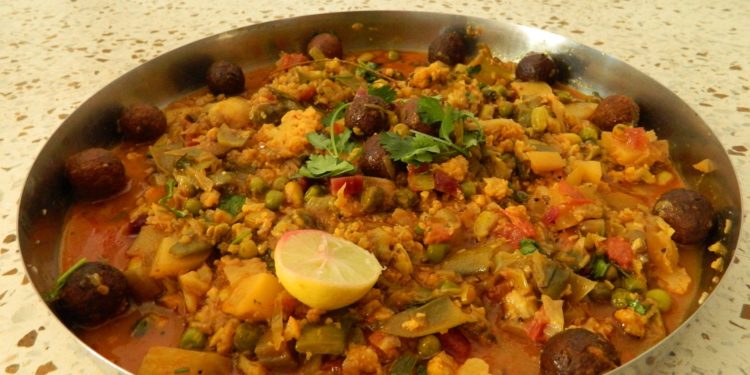The new normal has brought with it plenty of constraints, including constraints on how we celebrate holidays. While extravagant festivities are prohibited during Uttarayan, there are no prohibitions on indulging in some tasty and nutritious undhiyu. Undhiyu is timeless and never goes out of style. This delightful blend of sweet and spicy flavors is made using fresh veggies. Undhiyu is a winter staple that goes well with puris and shrikhand.
The 14th of January has been recognized as National Undhiyu Day. This winter mixed vegetable dish has cult status in Gujarat, where it is notably produced and enjoyed during Uttarayan (the festival of kites) in families across the state. It derives its name from the Gujarati words ‘matlu’ (earthen pot) and ‘undhiyu’ (upside down), since it was historically cooked upside down in an underground chamber in earthen pots burned from above.
‘Undhiyu is an emotion in Gujarat’
Surat is claimed to be the birthplace of this classic Gujarati delicacy. This delicacy, made with seasonal vegetables such as flat beans, brinjal, sweet potatoes, baby potatoes, raw banana, and purple yams, is not only flavorful but also healthful. Undhiyu is more than a culinary preparation; it is a sentiment shared by all Gujaratis. It is best consumed during and around the month of Uttarayan. The flavor of the meal is enhanced by the freshness of the seasonal veggies.

This regional favorite dates back to pre-industrial India when meals were cooked over wood fires. Even today, deep in Gujarat’s heart, it is being prepared in the traditional manner. The flavors from the vegetables’ freshness, the smokiness of the clay pot, and the bio-fuel combine to give it a seasonal punch.
Undhiyu is available in a variety of flavors and forms from the southernmost tip of Gujarat to the northernmost tip of the state. The Palanpuri undhiyu has mustard oil, the Kathiyawadi undhiyu contains muthias, the Ahmedabad undhiyu is red and spicy, and the Surti undhiyu is green and garlicky. The same recipe is used to make umbadiyu in the Valsad area.
Traditionally, the crucial element of this cuisine is the preparation process, which is cooked on low heat for a longer period of time to impart the majority of the flavors in the dish. No Gujrati home is complete without undhiyu, which may be found in the festive dinner on the day of Uttarayan. It is traditionally produced in a clay pot known as a “matka” or matlu.
In the matki, the masala and veggies are combined. Matki is properly sealed and then set upside down in a fire pit built into the earth. This method is still practiced in Gujarati communities today. We can even make a quicker version that uses less oil by utilizing a pressure cooker. You may save even more time by purchasing prepared dried muthias. However, be sure to throw them in with the veggies so that they soften during cooking.
The delicacy is seasonal, made out of vegetables available on the South Gujarat coastline during the winter season. Dry curry powder is used to season them. Undhiyu is classified into two categories. From Surat to Ahmedabad, it is prepared with green masala, whereas Saurashtra cooks it with red masala.
Surti undhiyu is served with puris during weddings and banquets. It’s another mixed vegetable dish, this time cooked with red lentils and seasoned with spices, shredded coconut, and palm sugar in a light sauce. It’s topped with toasted grated coconut and chopped peanuts.
The many veggies that go into undhiyu create a one-of-a-kind mixture that contains a range of prebiotics. Prebiotics often promote the growth of “good bacteria” or microorganisms in the colon that facilitate digestion. This helps with digestion. Aside from that, it is a good source of amino acids.
Preparation Tips:
- Make sure to include premade dried muthias with the veggies. So that they soften during cooking
- Reduce the amount of oil you use if you’re attempting to cut down calories.
Health Tips:
- Undhiyu features a variety of veggies that make for a wholesome snack.
- Most veggies are minimal in fat and calories while being satisfying.
- Vegetables provide dietary fiber as well as critical vitamins, minerals, and trace elements. The antioxidant vitamins A, C, and E are very significant.
- This dish contains a lot of potassium.





















